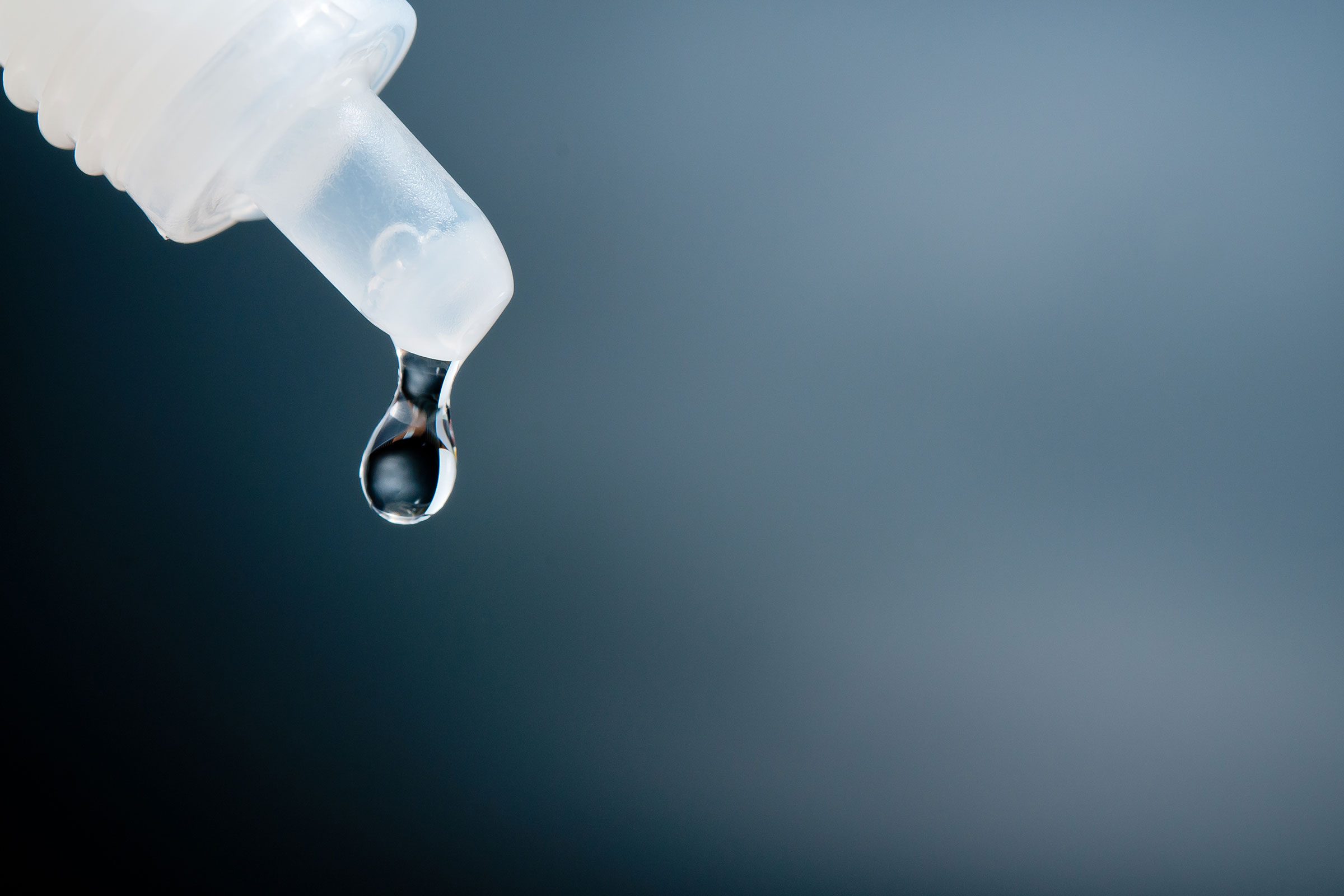The product may be used to treat a condition that the American Academy of Ophthalmology says affects around 20 million Americans.

More Eye Drops Have Been Recalled Nationwide

Earlier this week, the U.S. Food and Drug Administration (FDA) warned consumers that over 136,000 bottles of eye drops often used to treat pink eye presented a health hazard due to faulty packaging. Now, yet another recall has been announced for a different brand of eye drops—these, indicated for eye dryness, which expert sources say has grown in the past two decades to be a prevalent condition among U.S. adults.
On December 18, 2024, the FDA first announced the recall of Polyvinyl Alcohol Ophthalmic Solution 1.4% Moisturizing Lubricant Eye Drops, a product distributed by the Tennessee-based AvKARE. Also known as “artificial tears,” this type of solution is formulated to help soothe the effects of “dry, smoky or windy environments or [irritation] from fatigue,” the Cleveland Clinic explains. It is sold over-the-counter, often by off-label brands, and may be available at major pharmacies, retail chains, and through outlets such as Amazon.
The recall reason, as cited by the FDA: “LABELING: LABEL MIX-UP.” The nature of the labeling error is unclear, but it’s possible this could affect eye safety or comfort.
One upside is that if you’ve used them, this week the FDA categorized the recall as a Class III risk level, suggesting that use of the product is “not likely to cause adverse health consequences.” However, the national health agency is still urging consumers not to use the mislabeled products.
Past eye drop recalls have highlighted their potential dangers. In 2023, the FDA issued a mass recall affecting over 25 brands of contaminated eye drops, citing concerns that they could cause widespread eye infections.
The FDA’s notice has not specified how many 0.5 fluid-ounce (“FL OZ,” or 15-milliliter) bottles of the product were sold, but it does note that they were distributed nationwide.
Several details on the recalled product label may help you identify whether you purchased it:
- National Drug Code (NDC): 50268-678-15
- Lot Number: 0160
- Exp. Date: April 26, 2026
“Artificial tear products usually work in one of two ways: They either add to the water (aqueous) part of your tears or to the fatty acid (lipid) part of your tears,” the Cleveland Clinic explains. “Layers of mucus, water and lipids make up your tear film, which is part of your tear system, also known as the lacrimal apparatus or the lacrimal system,” their experts explain.
As the Cleveland Clinic notes, roughly 5 million people over the age of 50 have severely dry eyes, and an additional 20 million people have mild to moderately dry eyes. People from both groups routinely turn to eye drops to soothe their symptoms.
For daily wellness updates, subscribe to The Healthy by Reader’s Digest newsletter and follow The Healthy on Facebook and Instagram. Keep reading:


















